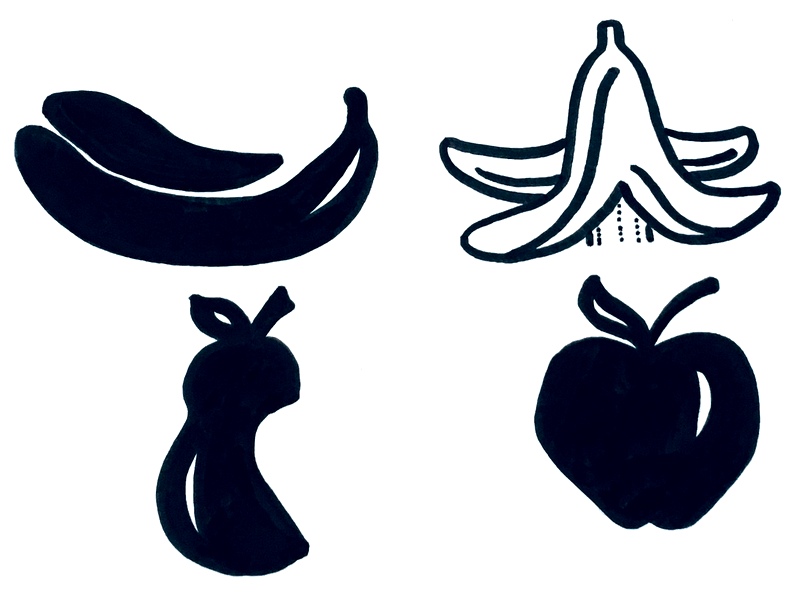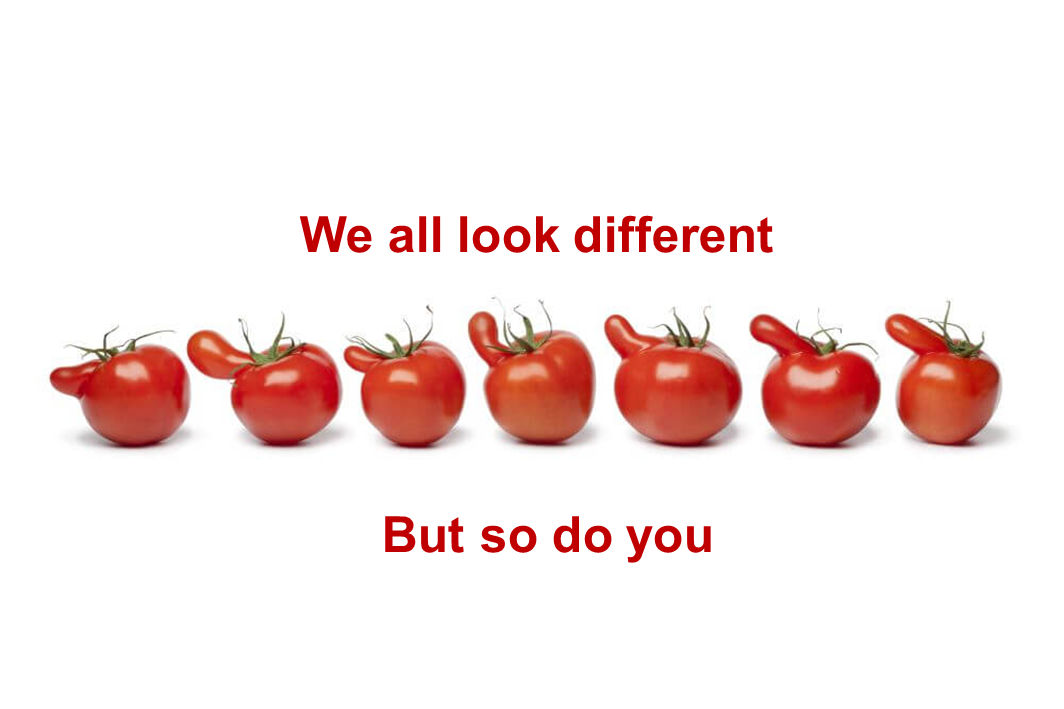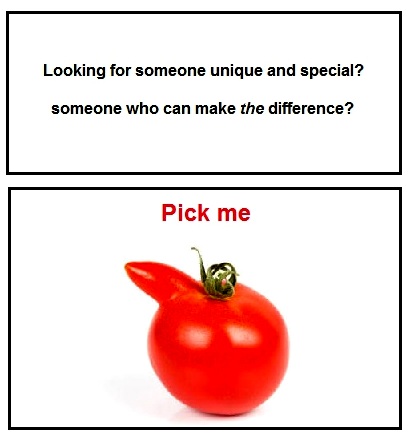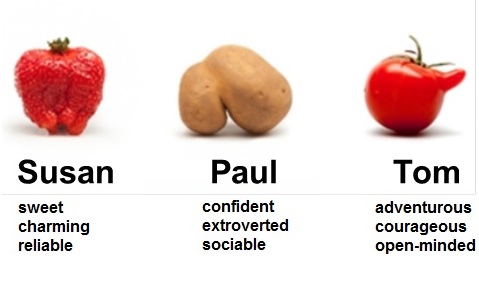How to reduce food waste?
Change the image. Create a story.

#foodwasteproblem #1
Fruits and vegetables that are not perfectly shaped or sized (i.e deformed) are sorted out by farmers and retailers.
Why?
Regulators, farmers and supermarkets all share the same line of argument: that consumers are simply reluctant (unwilling) to buy such food items, because they are associated with inferior quality.
But that’s not true.
Taste goes over looks
Surveys show that consumers care more about taste than about the looks of food. Consumers would actually be willing to buy dissimilar looking (heterogenous) vegetables and fruits if they had the choice (FAO, 2011). Assuming the “customer is king”, this suggests that, as consumers, we can influence quality standards and consequently prevent food loss.
However, what is needed, is a radical image change.
Deformations are desirable !
If we succeed in communicating deformations in fruits and vegetables as something desirable, beautiful and nature-given, we can induce consumers to buy them voluntarily. Instead of associating deformations with inferior quality, people will start associating them with diversity, individuality and uniqueness – all very positively connotated in Western societies.
This approach works well because human thought and action is “fundamentally metaphorical in nature” (Lakoff and Johnson, 1980).
When an abstract idea (e.g. uniqueness) is represented as something concrete (e.g. deformed fruit), we speak of an ontological metaphor.
In focussing systematically on one aspect (the singularity, exceptionality of fruit), the ontological metaphor hinders us from concentrating on other aspects (the imperfections and potential lower quality of fruit).
Here’s an imaginary media campaign I came up with to illustrate my idea:

This ad pictures heterogeneity and individuality as a quality in humans and speaks directly to us (“so do you”). The metaphor maps this human quality onto deformed tomatoes. The tomatoes are personified and voice themselves (“we all look different”) which makes the comparison and identification with them stronger.

At first glance this ad seems to advertise how to find your perfect match, the special “someone” who will make the difference in your life. The ensuing picture of a deformed tomato that says “pick me” is surprising and bizarre, to say the least.
In case you are puzzled now, where I want to lead you to, the underlying message is the following:
Picking this unique, special vegetable (instead of it being trashed) will make the difference in society (it will reduce food waste, CO2 emissions…) and ultimately make the difference in your life too (improve your livelihood and wellbeing).
► Btw, the link between the first and the second screen is in the wordplay on “picking” – as in “choosing a spouse” (screen 1), as in “buying a product” (screen 2).
You may find this a bit farfetched, but many more creative and humorous ads are imaginable to stress that deformations are desirable!
Creating touch points
Changing consumer attitudes and behaviour is also a matter of creating touch points (exposure) with – in our case – deformed fruits/vegetables, as early as possible in childhood. If children regularly see them displayed in supermarkets and depicted in books, ads, movies etc., they will see deformed fruits/vegetables as something completely “normal” and even beautiful. And: this will impact their consumption behaviour as grown- ups.
The logic behind touch points is comparable to “exposure therapy” where people with anxiety disorders are directly confronted to the source of anxiety. But it also applies to other phenomena:
For instance, in places where many immigrants live, i.e. where locals are in touch with immigrants, acceptance/tolerance towards them is much higher (and xenophobia much lower) than in places with almost no immigrants.
So, let’s be in touch – that’s my key take-away here.
Telling a story
Story telling is a powerful communication tool. For a story to induce a desired shift in attitude and behaviour it needs to be persuasive. According to Delgado-Ballester and Fernández-Sabiota (2016) a good story has 4 elements to it: authenticity, conciseness (=briefness), reversal and humour.
So, let’s create a story
Imagine a video ad that presents the life story of individual fruits and vegetables that each carry their own name and personality:
First, seeds are sown (“birth”), next: they “grow up” to become a plant, then they carry fruits (=“conceive children”), and finally they are harvested and end up in the supermarket (“mature adulthood”).
But caution: the story will take an abrupt ending. Instead of being consumed, the fruits and vegetables – although still in good condition- will be thrown away (“premature death”).
The aim of this little story is to call for action (to save the fruits/vegetables), to make the consumer aware of his/her own responsibility and make him/her change behaviour.

Give food personality
Why present fruits and vegetables with names and personalities?
This may sound really odd.
But, it creates an emotional bond between consumer and food. Research shows that attributing human personality to something that is not human (anthropomorphising) can induce consumers to act more pro-enviornmental, i.e. to waste less (Ahn et al., 2014).
This is because of the “anticipated guilt” they feel from the potential negative consequences of their bad actions (“premature death” of the vegetables). Hence, anthropomorphising provides an intrinsic motivation (driven by your own integrity/ by internal rewards) to do something good for society.

Story checklist
Let’s go back to the 4 elements of a good story (authenticity, conciseness, reversal and humour) to check now if my story is persuasive and good enough.
– Authenticity ✔ The “natural” life cycle of fruits/vegetables in agriculture is depicted (sowing seeds, growing a plant, harvesting), which makes the story realistic and authentic.
– Conciseness ✔ The story is presented with time lapses, highlighting only important “milestone” points in time.
– Reversal ✔ The story ending with the food being thrown away instead of consumed – although it is still edible – represents a turning point/reversal as it disillusions the expectations of the audience.
– Humour ✔ The fact that the characters of the story are vegetables and fruits that carry names and personality gives rise to surprise and smiles from the audience.
Emotion ⩾ Rationality
Metaphors, anthropomorphising and story telling are all concepts that rely on our experiential system, they speak to our emotions and feel. This makes them a strong complementary if not alternative solution to current food waste reduction strategies which are grounded in a more analytical approach (speak to our rationality).
Some things to consider
The creation of a new metaphor such as “deformed fruit = unique” can pose problem as metaphorical language is not univocal. It could be misinterpreted by the audience.
A second point is that food standards in the EU are (strongly) regulated by the European Commission (EC). For instance the EC regulates that bananas must be “free from malformation or abnormal curvature” (EC 2257/94, 2011).
This means that end consumers only have limited power to influence food waste. Making consumers aware that deformations ≠ inferior quality can only indirectly reduce food waste, assuming the campaign will change their consumption behaviour and exercise enough pressure on regulators.
Note: Nothing here against the EU/EC per se. It’s good to have quality standards. But they should perhaps focus on sustainable ecology and bio-diversity rather than on (uniform) shapes and sizes.
After all, isn’t the EU’s slogan “United in DIVERSITY”?
Written and published June 2019
by Jessica
List of references I used in this article:
Ahn, H., Kim, H., & Aggarwal, P. (2014). Helping Fellow Beings. Psychological Science, 25(1), 224-229.
Cian, L., Krishna, A., & Schwarz, N. (2015). Positioning Rationality and Emotion: Rationality Is Up and Emotion Is Down. Journal of Consumer Research,42(4), 632-651.
Delgado-Ballester, & Fernández-Sabiote. (2016). “Once upon a brand”: Storytelling practices by Spanish brands. Spanish Journal of Marketing – ESIC, 20(2), 115-131.
Denning, S. (2006). Effective storytelling: Strategic business narrative techniques. Strategy & Leadership, 34(1), 42-48.
European Commission (2011) Commission Implementing Regulation (EU) No 1333/2011 laying down marketing standards for bananas, rules on the verification of compliance with those marketing standards and requirements for notifications in the banana sector. Official Journal of the European Union. http://data.europa.eu/eli/reg_impl/2011/1333/oj
FAO (2011) Global food losses and food waste – Extent, causes and prevention. Rome: FAO
(FAO) Food and Agriculture Organization, International Fund for Agricultural Development, World Food Program (2015) “The State of Food Insecurity in the World 2015. Strengthening the enabling environment for food security and nutrition.” Rome: FAO.
Lakoff,G.,& Johnson,M.(1980).Metaphors We Live By. University of Chicago Press.
Lakoff,G.,& Johnson,M.(2003).Afterword.In Metaphors we live by (University of Chicago Press., pp. 243-276). University of Chicago Press.
Landau, M., Meier, B., Keefer, L., & Hinshaw, Stephen P. (2010). A Metaphor-Enriched Social Cognition. Psychological Bulletin, 136(6), 1045-1067.